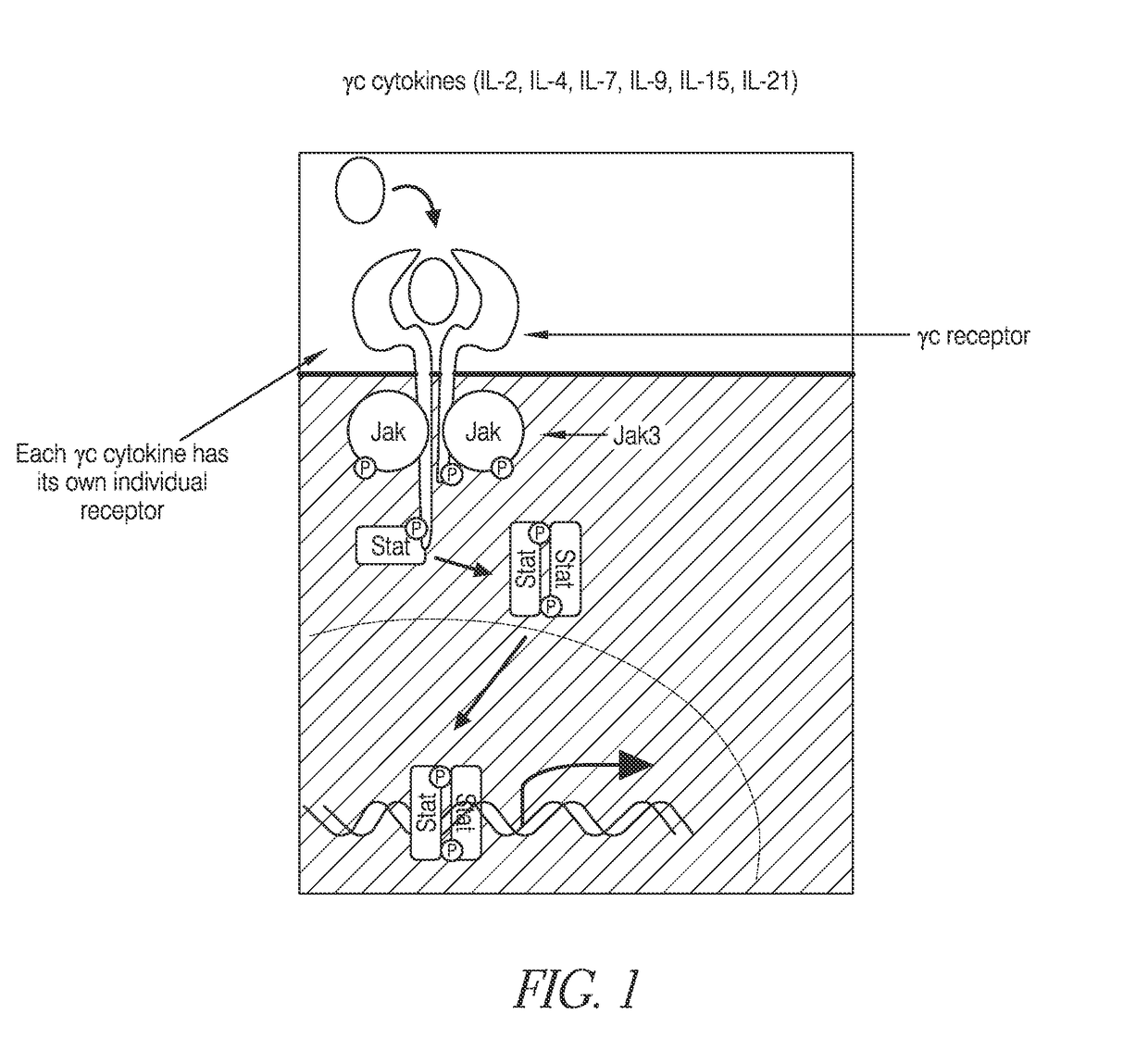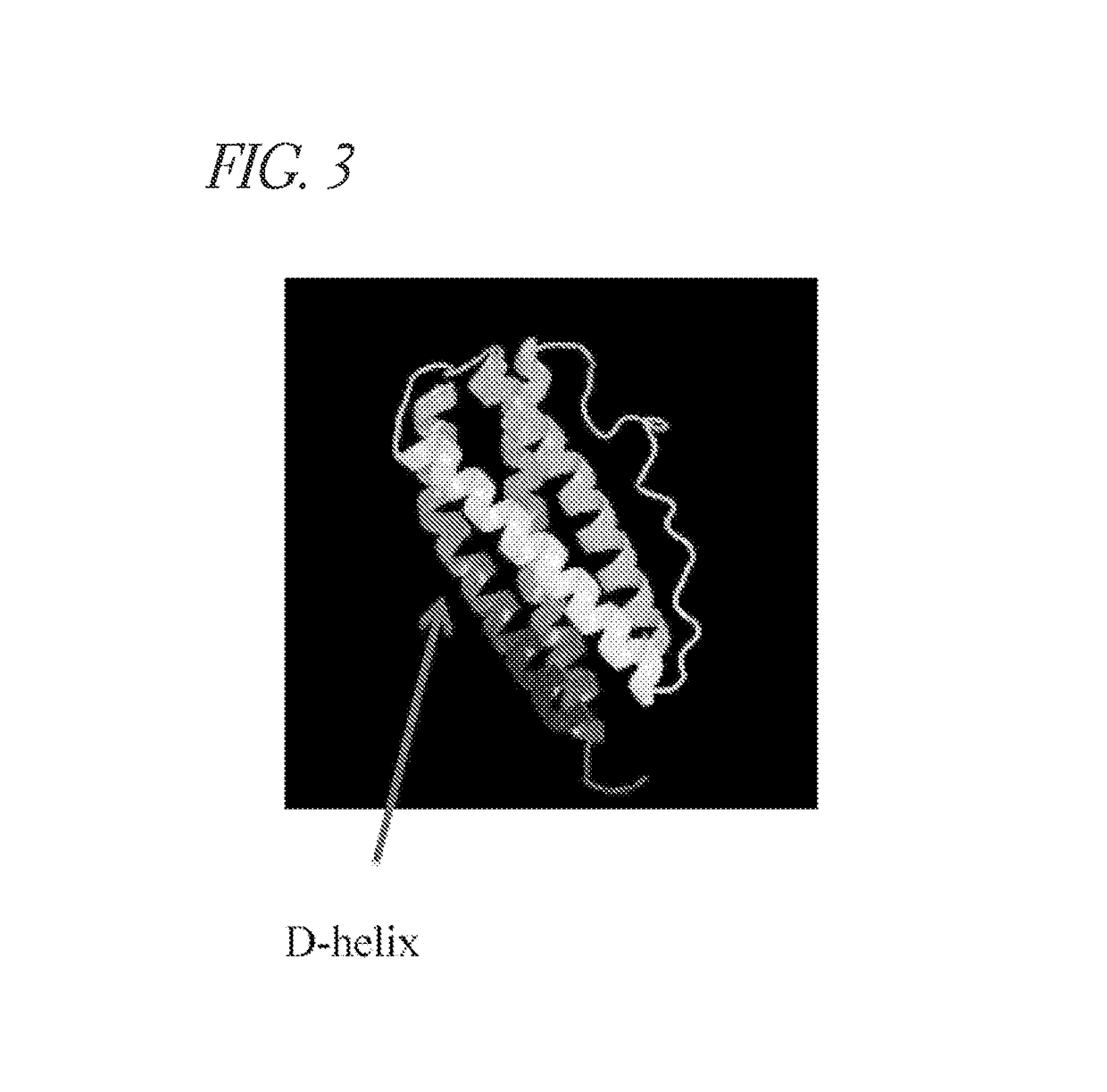Methods of developing selective peptide antagonists
a technology of peptide antagonists and peptides, applied in the field of single-polypeptide specific inhibitors, can solve the problems of substantial redundancy in signaling and substantial risk of side effects
- Summary
- Abstract
- Description
- Claims
- Application Information
AI Technical Summary
Problems solved by technology
Method used
Image
Examples
example 1
Identification of Ligand Targets
[0275]A cytokine or signaling pathway is implicated in a disease in the scientific literature. A set of ligands in a structurally determined ligand family each of which is independently implicated in the signaling pathway is identified based on publicly available information in the scientific literature. Other ligands in the same structural ligand family but not implicated in the common signaling pathway are also identified based on publicly available information in the scientific literature. The ligands implicated in the signaling pathway are selected for specific inhibition.
[0276]This example shows that specific ligands within a structural family of ligands may be selected for specific inhibition based on publicly available information in the literature.
example 2
Identification of a Target Region—Modest Sequence Similarity
[0277]Polypeptide sequence for each member of the family of ligands of Example 1 is obtained from the national center for biotechnology information (ncbi). The family is researched in the publicly available literature and information on the structure of a member of the family is obtained, including information related to a ligand's interaction with a receptor.
[0278]Sequences for the polypeptides are aligned using COBALT, a protein alignment algorithm publicly available at ncbi. Other software publicly available (such as software by Stanford University) is also suitable. The family members demonstrate an overall pairwise sequence identity of 20% and a pairwise sequence similarity of 50%, and about the same length, indicating that the sequence alignment is likely indicative homologous regions of each family member. The region of each family member corresponding to the region which interacts with the receptor in one known fami...
example 3
Identification of a Target Region—Low Sequence Similarity
[0280]Polypeptide sequence for each member of a family of ligands identified as in Example 1 is obtained from the national center for biotechnology information (ncbi). The family is researched in the publicly available literature and information on the structure of a member of the family is obtained, including information related to a ligand's interaction with a receptor.
[0281]Sequences for the polypeptides are aligned using COBALT, a protein alignment algorithm publicly available at NCBI. The family members demonstrate an overall pairwise sequence identity of near 0% and a pairwise sequence similarity of near 0%, and substantial length variation, indicating that the sequence alignment is likely not indicative homologous regions of each family member. Family members are subjected to 3D structure prediction such as that described in Wang et al., (2013) Bioinformatics. 2013 Jul. 1; 29(13):i257-65, which is incorporated by refere...
PUM
| Property | Measurement | Unit |
|---|---|---|
| volume | aaaaa | aaaaa |
| volume | aaaaa | aaaaa |
| concentration | aaaaa | aaaaa |
Abstract
Description
Claims
Application Information
 Login to View More
Login to View More - R&D
- Intellectual Property
- Life Sciences
- Materials
- Tech Scout
- Unparalleled Data Quality
- Higher Quality Content
- 60% Fewer Hallucinations
Browse by: Latest US Patents, China's latest patents, Technical Efficacy Thesaurus, Application Domain, Technology Topic, Popular Technical Reports.
© 2025 PatSnap. All rights reserved.Legal|Privacy policy|Modern Slavery Act Transparency Statement|Sitemap|About US| Contact US: help@patsnap.com



